




 Praxis
Praxis is a 2D, story-driven "
metalroidvania" (a term that I believe I am the first to coin, referring to a metroidvania-like stealth game). I was inspired to experiment with this kind of mash-up after noting the similarity in structure between the original
Metal Gear, in which many of the items both add to the gameplay and act as keys, and
Metroid. By synthesizing ideas from the few existing 2D stealth games (like
Mark of the Ninja, TURBOGUN's
Master Spy, and Yahtzee's
Trilby), both early and modern metroidvanias (
Metroid,
Zelda II,
Axiom Verge, and
Elliott's Quest) and even modern systems-based games (
Metal Gear Solid V, Breath of the Wild), I've ended up with a game design I've found compelling enough to put some work into. It is being developed with Unity, and I hope to one day release it on Steam and maybe some consoles if I can get admitted to a dev program. I am creating all of the assets, music, and code myself. At this point I have done a ton of coding, game design, and asset creation, now starting to focus more intently on level design.


As a metroid-like, the core gameplay is that of a 2D platformer. The player can jump, crouch, climb ladders, etc. In addition to these basic abilities, the player augments their abilities overtime via collecting items in their inventory. These are classified into
Weapons,
Grenades,
Items, and
Abilities. Weapons are, generally speaking, guns that shoot projectiles of some sort (and have consumable ammunition), while grenades are tactical items that affect a large area (explosions, chaff, sleeping gas, etc.). Items must be equipped to use their unique gameplay mechanic (like an item that allows you to hack computer terminals), while abilities augment the default move set (like the Teflon Suit, which allows you to perform a slide maneuver whenever you wish). I will go into more detail about the item lineup in a future post.

As a stealth game, Praxis utilizes many of the standard systems we associate with that genre, and some non-standard systems. Enemies have a "vision cone" (which is not visible until that ability has been obtained), patrol their routes, investigate noises (like gunfire), and pursue the player when the alert system has been activated. You can see the last place you were visible to the enemy (the yellow striped outline), or any noises that you made that have caught the attention of enemies (blue circle). See examples in the images below:


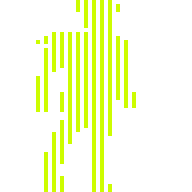
You can also hide in various receptacles in order to not be found. Here, the player is hiding in a dumpster:

In addition to these noise and vision systems, there is also an odor system. An early example of this in action is the dog enemy, who normally patrols but can smell the player when they enter a certain range. The dog will then investigate. If they find the player, they will bark and bite. Though they can't set off the alert system, their bark will interact with the noise system, and will attract other enemies.

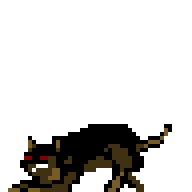
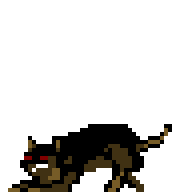
Another tradition in stealth games is surveillance cameras. Surveillance cameras set off the alert system, but they do not attack you directly (at least not in their initial iteration). You can also hack them at terminals, seeing the rooms that they surveill and potentially shutting them down remotely (with the appropriate inventory item).



Yet another stealth trope is darkness and illumination affecting the perception of the player by the enemy (TLDR; visibility). Praxis' utilizes a binary visibility system, though this is only relevant in certain rooms and locations. A good deal of the game takes place in fully illuminated areas, but some areas are dark, with light flowing in through windows or being emitted by lamps and fixtures. It is binary in the sense that you are either visible or you're not, and this is easily communicated by the fact that you are covered in darkness or visible on screen inside the light source.

Here you can see the player engulfed in darkness, then shooting a flare gun. Flares emit light to help you see, but will also make you more visible to enemies. They also emit flame, so they will damage you if you get too close.

You can also shoot out lights with lethal projectiles (such as the standard pistol, shown here).

Later in the game, a night vision item allows you to navigate the darkness with ease (however, there may be enemies that possess night vision as well).
There are also some "chemistry" (to borrow a term from the BOTW team) type systems that impact gameplay. Right now, these include air, fire, and electricity.
Air - The facilities in the game all have ventilation shafts. If the ventilation system is activated, it will intake gases and disburse them through the facility. This could be used to strategically disburse smoke (which can be used to affect player visibility), sleeping gas, toxic gas, etc. Later in the game, you get a wingsuit item that also allows you to take advantage of fans and drafts for better navigability.

 Turning on the ventilation system, you can see sleeping gas being disbursed through a facility.Fire
Turning on the ventilation system, you can see sleeping gas being disbursed through a facility.Fire - Certain items can catch fire if they are exposed to a fire source. This causes more fire, which catches other things on fire, etc. This can be used to damage enemies and open pathways, but can also be used against you, as enemies could set hiding places on fire, or ignite flammable gas, etc.
 Flammable gas being ignited by a flare, and spreading to a nearby crate, which also catches on fire.Electricity
Flammable gas being ignited by a flare, and spreading to a nearby crate, which also catches on fire.Electricity - The game has a concept of "power", where electrical devices such as computers and lights must be powered by electricity to be used. There is an electricity source that is affected by things like switches or generators, and this electricity is distributed by both inivisible and visible conduit systems (which is really just a system of overlapping colliders). You can disrupt electricity access by severing a connection, but can also inadvertently expose yourself to raw electricity that is conducted by items in contact with the electrical source. You may also need to complete circuits to enable systems to be used.
 Shooting an electrical cable connected to a utility pole, falls down to a metal box that conducts. Then the player is electrocuted by the metal box.
Shooting an electrical cable connected to a utility pole, falls down to a metal box that conducts. Then the player is electrocuted by the metal box.There are other gameplay elements, but I will go into more detail in future devlogs.
 Plot
PlotThe year is 2017 and after years of a slow decline, the United States government has fallen into the hands of corporate oligarchs. In order to help reign in the pillaging of the nation's natural resources and the exploitation of its people, several corporate watchdog NGOs have adopted the strategy and tactics of industrial espionage.
You are ALTHUSSER, a member of PRAXIS, a highly regarded (and simultaneously much-despised) NGO focusing on environmental and labor abuses. You have been tasked with infiltrating MELLIFERA PLANTATION, a large industrial complex located on a small US protectorate in the Caribbean sea, and gathering evidence of their crimes. Led via radio by your commander, MOTHER, your mission will lead you to decommissioned laboratories, repurposed factories, local villages and much more as you uncover the truth about what is really going on within the heart of BROOD BOX ISLAND.
This is a story about corporate greed, student debt, and structural oppression.
Some story related, in-engine scenes:




 CharactersAlthusser
CharactersAlthusser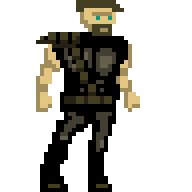
The player character. A college graduate. A sneaky guy. Inner-strength augmented by outer-strength, or is it the other way around?
"Well, this situation seems entirely ridiculous."Mother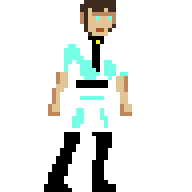
Founder, along with FATHER (not pictured), of the non-governmental organization PRAXIS. Provides guidance to Althusser as he infiltrates the island, keeping in contact via various radio terminals spread across the landscape. Concerned about the apparent disappearance of Father on the island.
"I just think they're neat!"The Flying Dutchman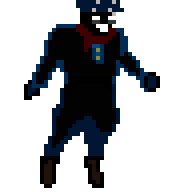
Mysterious and mystical, rumoured to be the leader of the Situationists (though they maintain they have no leaders). Wears a mask to obscure his face, but otherwise dresses like a member of Dexy's Midnight Runners.
"It means this company is legally a person. But what if we carried that idea even further?"Bonedriver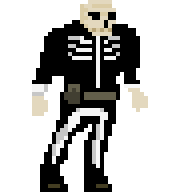
Horribly disfigured under circumstances he wishes not to discuss, Bonedriver is a Situationist who still maintains some level of autonomy. Often shows up in strange places to craft helpful items for the player, but to what benefit of his?
"No gods, no masters, no problem."Anaheim Steamroller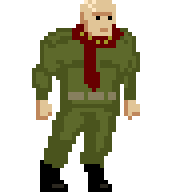
A former Mossad agent turned Situationist. Stoic, hardy, and strong, he will not be taken down easily. Well-read, and formally educated.
"We often confuse the things we want for the things we need."Joy DeVigne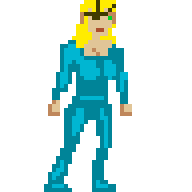
A highly-skilled operative, it is unclear whether she is a Situationist or works directly for Vice President Vohrich. Can cloak herself for short periods of time.
"That's not what you think it is."Winterpol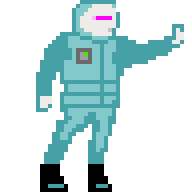
A cyborg member of the Situationists. His experimental artificial blood is extremely thermosensitive, so he must seek refuge in extreme environments. Remembers little of his pre-cyborg existence, but can be inexplicably triggered by sensory data.
"Sensors indicate a 90% chance of infiltration via this unguarded ingress."CryptoJoe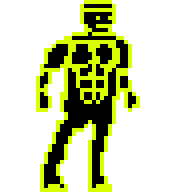
An entity who lives his life on the blockchain, protecting his cryptocurrency cache against egregious incursions.
"This is zero-knowledge proof that you're after my crypto, brah."Romeo Void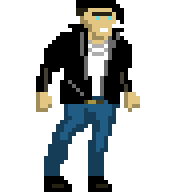
A heartbreaker from the mainland inexplicably stuck on the island. Is he friend or foe? Loves his motorcycle.
"Sometimes I just have to get on my hog and ride until I forget."David Hilbert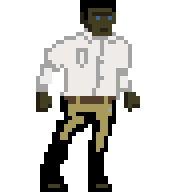
A physics PhD turned enterprise software code monkey, toiling away in the former flavorings lab of Opi-Cola for an unknown party. Helpful to Althusser, resentful to his unseen employer.
"Trust me. It makes entirely too much sense if you understand the underlying technology."Pierre Ubu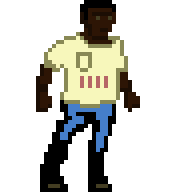
A previously successful contractor native to the island. Out of work since Mellifera has insourced all of their contracting work on the island.
"CAN WE BUILD IT? Yes, probably, if you provide funding and the materials."Kal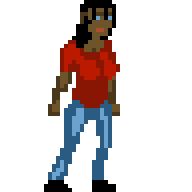
The leader of the island labor movement protesting Mellifera's stranglehold on the island. She could be the key to getting behind the plantation's walls.
"Work your entire life doing inconsequential things to survive, being treated like garbage along the way? No one should be subjected to that."Echo (The Bunnyman) 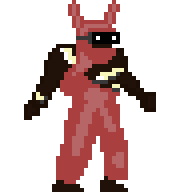
A social outcast native to the island who befriends and aids Althusser during his journey. Clad in a bunny suit that has clearly suffered the abuse of the other islanders, he has no permanent home, but is clearly resourceful.
"i Am NeItHeR bEaSt NoR mAn. I aM mOrE tHaN bEaSt AnD mOrE tHaN mAn."
Vice President Vohrich
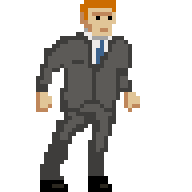
VP of Operations for Apis Industries, a holding company suspected of operating Mellifera as a front-company to hide their human rights and environmental abuses. If Althusser can obtain proof of his presence on the island, his mission will be more than worthwhile.
"Every dollar of debt your kind takes on is one more day my people stay in power."
More to come in future updates regarding music, gameplay, assets, etc.
Thanks!
